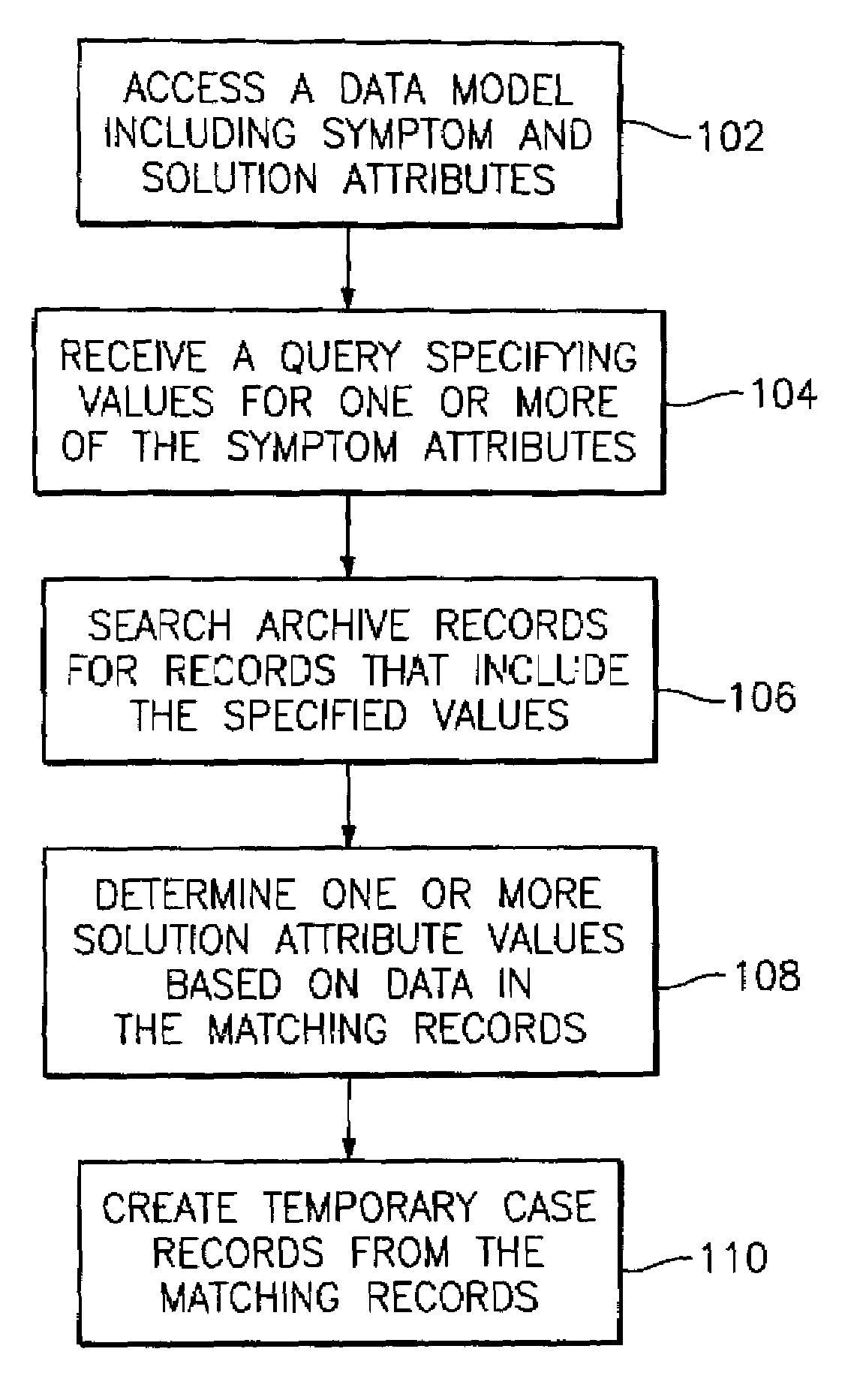Retrieving case-based reasoning information from archive records
a case-based reasoning and archive record technology, applied in the field of case-based reasoning, can solve the problems of inconvenient use of archive records, and inability to convert archive records, etc., and achieve the effect of avoiding the cost of converting a large volume and limiting resources
- Summary
- Abstract
- Description
- Claims
- Application Information
AI Technical Summary
Problems solved by technology
Method used
Image
Examples
Embodiment Construction
[0014]Exemplary embodiments utilize archive records to achieve case-based reasoning (CBR) information retrieval without creating a case base. A query triggers a search of the archive records and archive records relevant to that query alone are utilized to assemble a local, or temporary case base. In exemplary embodiments, information extraction (IE) tools are utilized to identify and select the archive records that match the query. The local, or temporary, case base is deleted when the query requestor exits the query or when the query requestor exits the query software program.
[0015]In exemplary embodiments, a “lazy learning” approach is taken, in that the query triggers a real time search of the archive records and that the results of the search are not permanently stored. In response to the query, records relevant to that query alone are used to assemble a “best answer” from the archive records. Exemplary embodiments are more robust and efficient than creating a permanent case bas...
PUM
 Login to View More
Login to View More Abstract
Description
Claims
Application Information
 Login to View More
Login to View More - R&D
- Intellectual Property
- Life Sciences
- Materials
- Tech Scout
- Unparalleled Data Quality
- Higher Quality Content
- 60% Fewer Hallucinations
Browse by: Latest US Patents, China's latest patents, Technical Efficacy Thesaurus, Application Domain, Technology Topic, Popular Technical Reports.
© 2025 PatSnap. All rights reserved.Legal|Privacy policy|Modern Slavery Act Transparency Statement|Sitemap|About US| Contact US: help@patsnap.com



